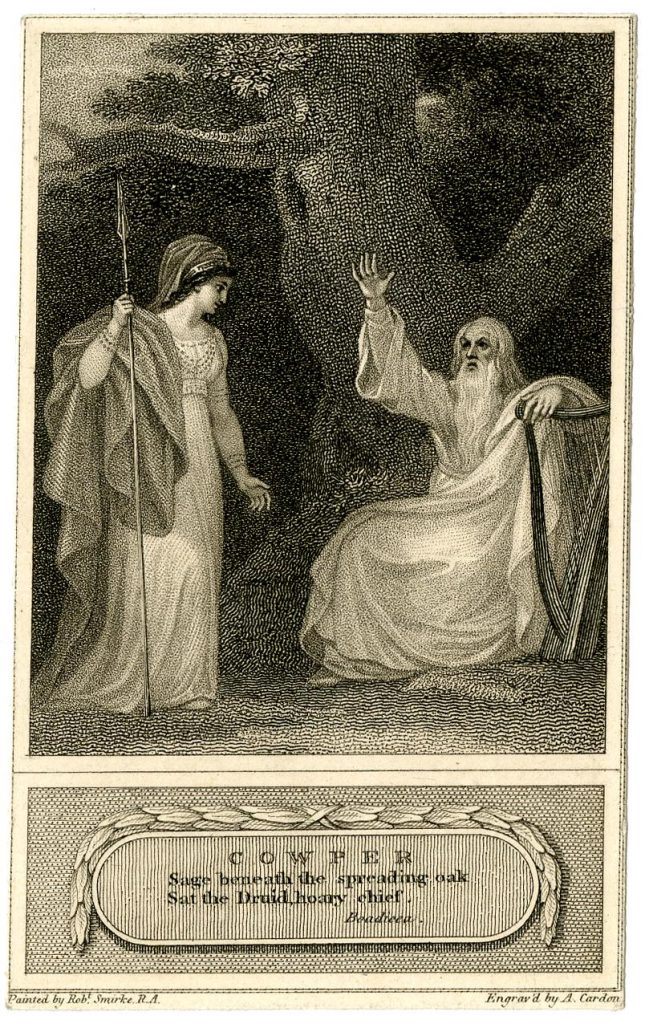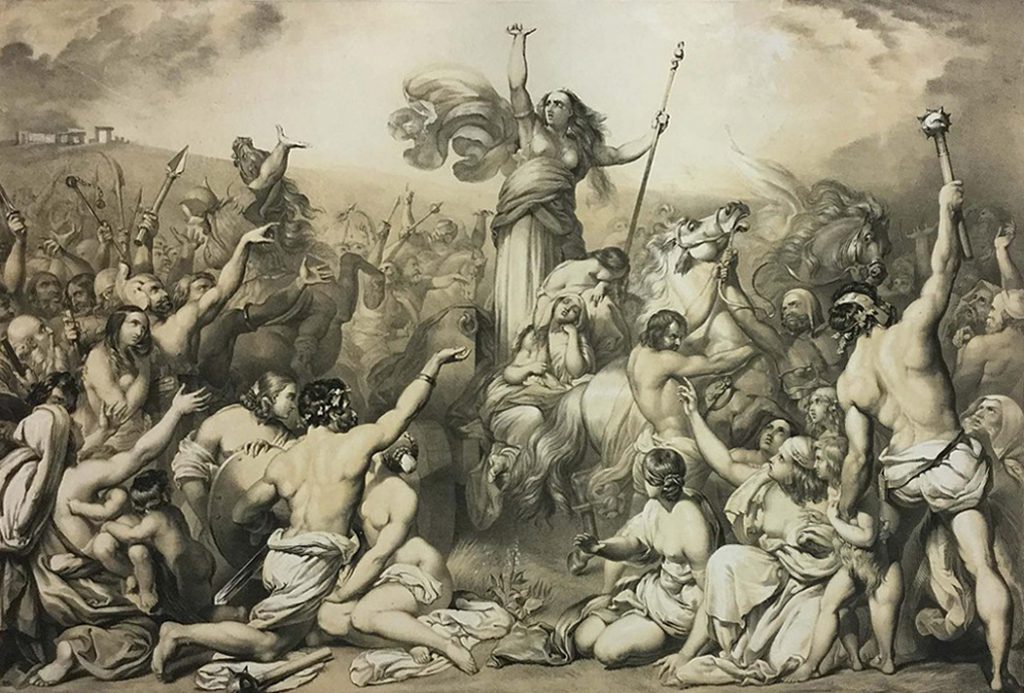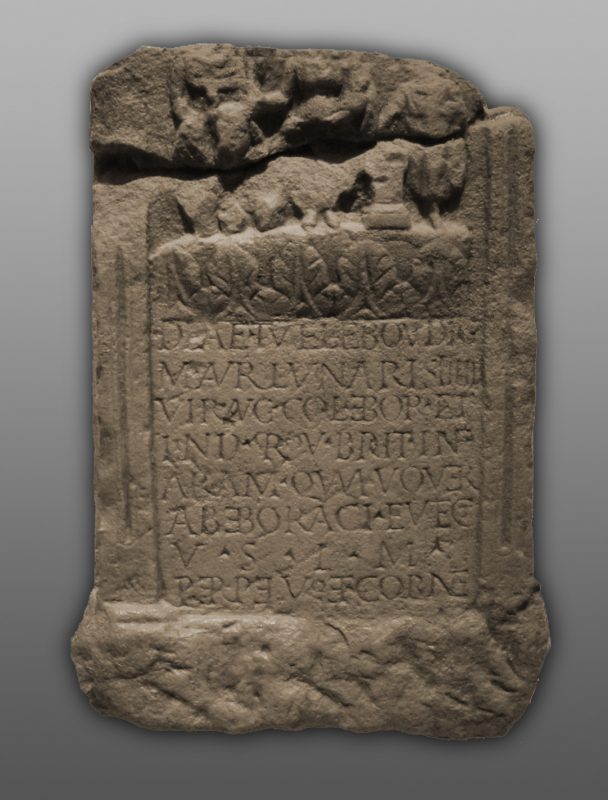All we know of Andraste was a war goddess worshipped by Queen Boudica and the Eceni/ Iceni. Human sacrifices were probably preformed in her name. It was probably the cult of Andraste that gave the Boudican revolt its religious zeal and cruelty.

Boudica, the Hare & Divination
Cassius Dio also tells that Queen Boudica released a hare before setting out on her campaign, while invoking Andraste. The hare was sacred to the Celts who believed that the fate of a battle could be predicted by releasing a hare and watching which way it ran.
[Boudica] employed a species of divination, letting a hare escape from the fold of her dress; and since it ran on what they considered the auspicious side, the whole multitude shouted with pleasure, and Buduica, raising her hand toward heaven, said: “I thank thee, Andraste, and call upon thee[…]”
Cassius Dio Cocceianus – The Histories of Rome : Book LXII, Chapter 6
In Celtic mythology and folklore the hare has links to the mysterious Otherworld of the supernatural. Druids were said to employ hares in prophesy by first catching them, then turning them loose to interpret the path of their escape.
Julius Caesar made the observation that the hare was a sacred animal.
The Britons consider it contrary to divine law to eat the hare, the chicken or the goose. They raise these, however, for their own amusement or pleasure.
Gaius Julius Caesar – The Gallic Wars : Book V, Chapter 12
Archeological evidence has found that the hare was often used for ritual purpose. Hare bones, remains of hare fur, and bronze hares have been found in a number of sacred pits throughout Britain, such as Surrey, Thistledon Dyer, and Ipswich.
Dio also states that Boudica appealed to the goddess Andraste with her hands rising to the heavens, performing an open supplication. Evidence suggests that it was only those who were considered to be Druids who were allowed to commune openly and perform supplication to the gods. It was also only within a Druid’s power to decide whether a war should be pursued.
In Celtic Mythology shapeshifters were often said to take the form of the hare. The Celtic warrior Oisin hunted a hare, wounding it in the leg. Oisin followed the animal into a thicket where he found a door leading underground. He went in and came to a large hall where he found a beautiful young woman sitting on a throne bleeding from a leg wound.
Was Boudica a Druid?
Tacitus asserts that Boudica made the decision to fight. He also states that her ancestry was considered very great, and makes claims she had some kind of communion with the gods. The ancient sources show that female druids did exist.

Dio claims that Boudica had druidic knowledge as to why both Augustus and Caligula had never attempted to sail to Britain.
[W]e did not deal with them while they were still far away as we dealt with Augustus and with Gaius Caligula and make even the attempt to sail hither a formidable thing.
Cassius Dio Cocceianus – The Histories of Rome : Book LXII, Chapter 4
Tacitus writes of another High Priestess, Veleda, supposedly of German origin. The name Veleda is Celtic, deriving from the root gwel, which means ‘to see’, or Seeress.
Veleda was an unmarried woman who enjoyed wide influence over the tribe of the Bructeri. The Germans traditionally regard many of the female sex as prophetic, and indeed, by an excess of superstition, as divine. This was a case in point. Veleda’s prestige stood high, for she had foretold the German successes and the extermination of the legions.
Tacitus, Histories, 4.61
Vedela was not the only Germanic prophetess known to the Romans. Tacitus informs us about a colleague.
In [the emperor] Vespasian’s days we saw Veleda, long regarded by many as a divinity. In former times, too, they venerated Aurinia, and many other women, but not with servile flatteries, or with sham deification.
Tacitus, Germania, 6
Who was the Goddess Andraste?
Andraste was often compared to the Morrigan, the Irish Warrior goddess, since they both have similar characteristics. Adrastea could have been associated with Andarta, a deity worshipped by the Cocontii of Gaul.
All trace of Andraste was wiped out after Boudica’s death and she was not adopted into Rome’s religion like other foreign gods. The massive religious hall of the Iceni, located at Thetford, was also dismantled.
There is evidence which proves there was both a strong cultural and ancestral link that existed between the Celts of Gaul, and the Celts of Britain. The goddess Andraste is only mentioned by Dio. Her sacred spaces were said to be in the groves of Andate, and her name was said to mean Victory. That means that both goddess of the tribe and High Priestess of the tribe shared the same meaning in name. This would signify that Boudica was the earthly element to Andraste’s supernatural element. There is evidence to show that priestesses were named after their patron goddess. Andraste is philogically linked to the Andarte, goddess to the Gaulish tribe of the Vocontii, whose name also meant victory or unconquerable.
The ‘name’ given by Cassius Dio may have been a mistranslation of ‘An Dras De’ – which is a Brythonic phrase meaning ‘The Tribal God’, ‘Dras’ being an old Welsh word meaning ‘kindred’. Consider the Irish god known as ‘An Dag De’ – the Dagda – a similar composite term is therefore possible.
Andraste and Human Sacrifice
Dio states that Roman women were sacrificed to Andraste in her sacred grove, all whilst Boudica and her warriors feasted and engaged in wanton behaviour. One could compare this religious activity to the Maenads of Dionysus’ Bacchae.
hose who were taken captive by the Britons were subjected to every form of outrage. The worst and most bestial atrocity committed by their captors was the following. They hung up naked the noblest and most distinguished women and then cut off their breasts and sewed them to their mouths, in order to make the victims appear to be eating them ; afterwards they impaled the women on sharp skewers run lengthwise through the entire body. All this [massacring Roman women] they did to the accompaniment of sacrifices, banquets, and wanton behaviour, not only in all their other sacred places, but particularly in the grove of Andate. This was their name for Victory, and they regarded her with most exceptional reverence.
Cassius Dio Cocceianus: The Histories of Rome: Book LXII, Chapter 4
There are many allegations that the Celts did indeed practice human sacrifice. The blood sacrifice would have been dedicated to Andraste as proof of gratitude.
either sacrifice men as victims, or vow that they will sacrifice them, and employ the Druids as the performers of those sacrifices
Gaius Julius Caesar: The Gallic Wars: Book 6, Chapter 16
Tutela Boudiga
Cementing Boudica’s religious status is the fact that a cult was formed sometime after her death named Tutela Boudiga. An inscription dedicated to this goddess has been discovered in Bordeaux, France, dated c. AD237.
Altar-to-Marcus-Aurelius-Lunaris - Altar-to-Marcus-Aurelius-Lunaris
In honour of the goddess Tutela Boudiga, M. Aurelius Lunaris sevir Augustalis of the coloniae of York and Lincoln, in the province of Lower Britain, [set up] the altar which he vowed on starting from York. Willingly and rightly did he fulfil his vow, in the consularship of Perpetuus and Cornelianus.
- Found in Bordeaux, in 1921 on Rue du Pont-de-la-Mousque during building works. The original altar is in the Musee d’Aquitaine in Bordeaux.
- The altar is made of millstone grit, a stone from Yorkshire.
- At the top of the altar is a frieze, though sadly a damaged one, depicting Lunaris making his sacrifice to Tutela. The goddess sits in the centre, holding a cornucopia. To her right stands a bull led by a priest and to her left, standing over his altar, is Lunaris. Tutela is notably larger than the two humans beside her, as befits her divine status.

Tutela Boudiga’s name translates as her being a goddess of protecting victory. This inscription was said to have fulfilled the vow of a Roman, Marcus Aurelius Lunaris, after he arrived in Gaul after safe passage from Britain. The name Boudiga is philologically linked to Boudica.
Boudica was either a female Druid, or the Priestess to Andraste of the Icenian tribe.
